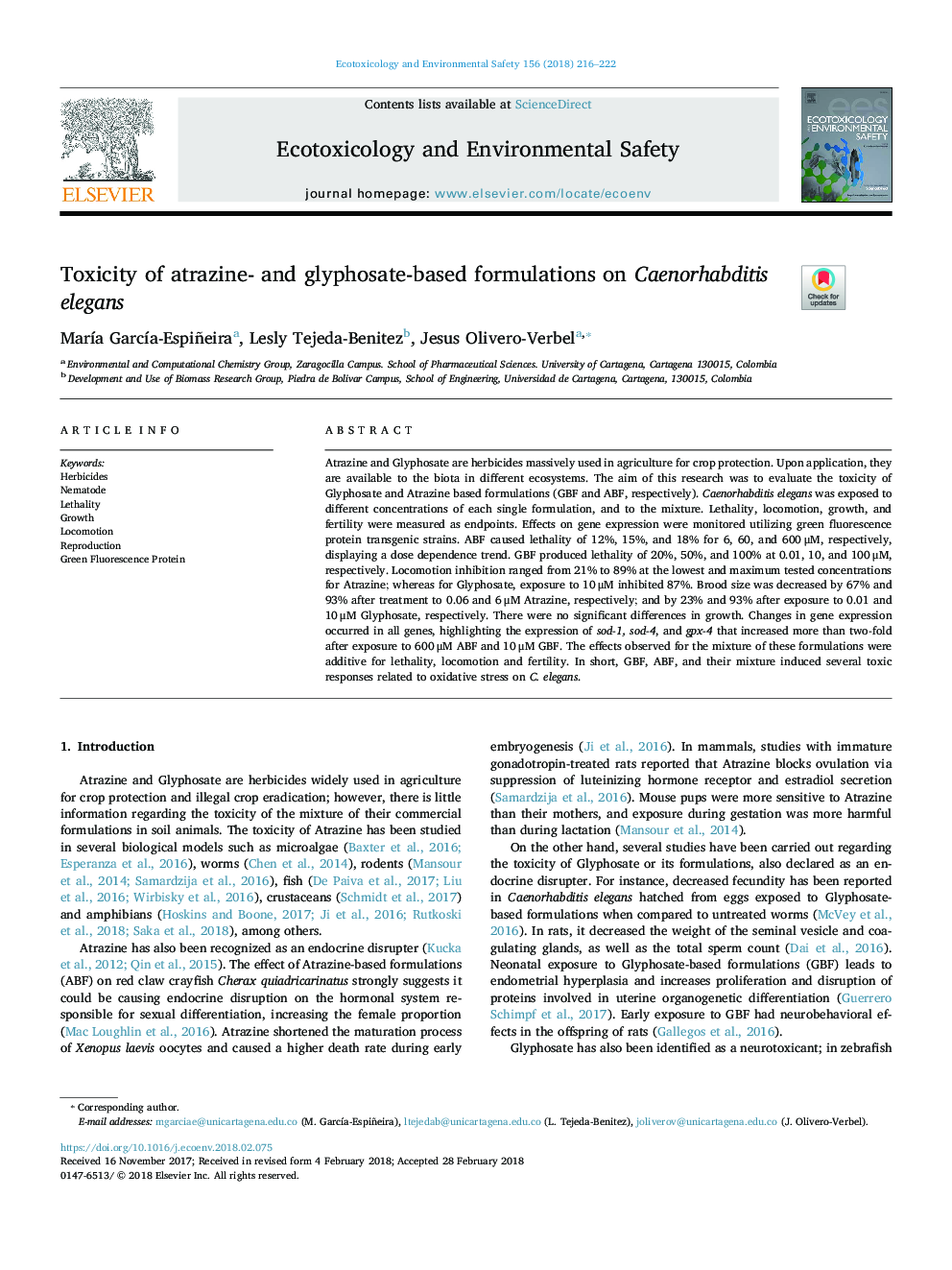| Article ID | Journal | Published Year | Pages | File Type |
|---|---|---|---|---|
| 8853996 | Ecotoxicology and Environmental Safety | 2018 | 7 Pages |
Abstract
Atrazine and Glyphosate are herbicides massively used in agriculture for crop protection. Upon application, they are available to the biota in different ecosystems. The aim of this research was to evaluate the toxicity of Glyphosate and Atrazine based formulations (GBF and ABF, respectively). Caenorhabditis elegans was exposed to different concentrations of each single formulation, and to the mixture. Lethality, locomotion, growth, and fertility were measured as endpoints. Effects on gene expression were monitored utilizing green fluorescence protein transgenic strains. ABF caused lethality of 12%, 15%, and 18% for 6, 60, and 600â¯Î¼M, respectively, displaying a dose dependence trend. GBF produced lethality of 20%, 50%, and 100% at 0.01, 10, and 100â¯Î¼M, respectively. Locomotion inhibition ranged from 21% to 89% at the lowest and maximum tested concentrations for Atrazine; whereas for Glyphosate, exposure to 10â¯Î¼M inhibited 87%. Brood size was decreased by 67% and 93% after treatment to 0.06 and 6â¯Î¼M Atrazine, respectively; and by 23% and 93% after exposure to 0.01 and 10â¯Î¼M Glyphosate, respectively. There were no significant differences in growth. Changes in gene expression occurred in all genes, highlighting the expression of sod-1, sod-4, and gpx-4 that increased more than two-fold after exposure to 600â¯Î¼M ABF and 10â¯Î¼M GBF. The effects observed for the mixture of these formulations were additive for lethality, locomotion and fertility. In short, GBF, ABF, and their mixture induced several toxic responses related to oxidative stress on C. elegans.
Related Topics
Life Sciences
Environmental Science
Environmental Chemistry
Authors
MarÃa GarcÃa-Espiñeira, Lesly Tejeda-Benitez, Jesus Olivero-Verbel,
